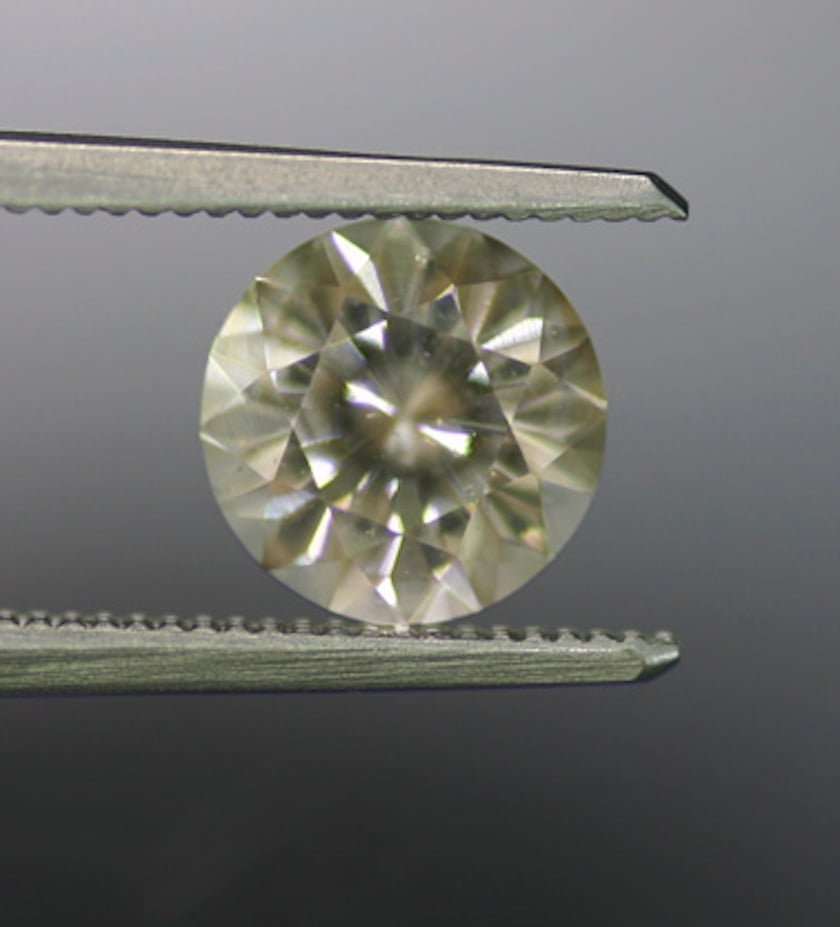Herderite Value, Price, and Jewelry Information
Herderite is a rare collector's gem, especially in larger sizes. Although too soft for daily jewelry wear, this material is attractive when cut and can show a wide range of colors.
1 Minute Read
Herderite is a rare collector’s gem, especially in larger sizes. Although too soft for daily jewelry wear, this material is attractive when cut and can show a wide range of colors.
Start an IGS Membership today
for full access to our price guide (updated monthly).Herderite Value
What is Herderite?
Herderite belongs to the herderite-hydroxylherderite mineral series as the fluorine (F)-dominant end member. If hydroxyl (OH) dominates, the specimens are then called hydroxylherderites. Herderites are rarer than hydroxylherderites, and some gems may be misidentified as their hydroxyl-dominant brethren.
Do Herderites Make Good Jewelry Stones?
With a hardness of 5 to 5.5, herderites would need protective settings for use as ring stones. They'll scratch easily, so it's best to reserve them for occasional wear. Other jewelry uses, such as earrings and brooches, would probably pose fewer risks.
Of course, herderites are rare minerals and aren't well-known by gem enthusiasts, so they rarely appear for sale as faceted pieces. Clean and large stones suitable for cutting are also very hard to find. However, more gem material may come on the market from Brazilian sources.
Identifying Characteristics
Some herderites can have a biaxial (+) optic sign. In general, however, OH-dominant specimens will have a positive sign and F-dominant specimens a negative sign.
The refractive indices (RI) of these gems systematically decrease as their F content increases. Thus, RIs in the lower range may indicate herderites.
The green gem from Brazil in Dr. Arem's photo has the following properties:
- RI: a = 1.581; β = 1.601; γ = 1.610.
- Birefringence: 0.029.
- Specific Gravity: 3.02
- Luminescence: Pale violet in shortwave (SW).
- Contains 7% F.
Synthetics
No known synthetics or enhancements.
Where is Herderite Found?
Brazil and Pakistan yield gem-quality herderites as well as hydroxylherderites. Minas Gerais, Brazil has produced crystals up to nearly fist size. Their colors include colorless and pink as well as some green and violetish.
The following locations may produce hydroxylherderites:
- United States: Maine (colorless and pale yellow crystals); New Hampshire.
- Austria; Germany; Russia.
Stone Sizes
Faceted gems from Maine usually weigh from 1 to 5 carats and show pale colors or appear colorless. Herderites from Brazil, however, have stronger colors. Faceters may cut stones up to 25 or 30 carats from larger crystals.
- Smithsonian Institution (Washington, DC): 5.9 (green, Brazil).
- Devonian Group (Calgary, Alberta, Canada): 3.65 (blue, Brazil).
- National Museums of Canada (Ottawa, Ontario): 4.65 (light violet octagon, Brazil).
Caring for Your Herderite Jewelry
Due to their relatively low hardness, don't clean herderites through mechanical processes, such as steam or ultrasonic systems. Instead, use a soft brush, mild detergent, and warm water. Avoid storing them with other harder, more common gemstones to avoid contact scratches. Consult our gemstone jewelry cleaning guide for more recommendations.
Joel E. Arem, Ph.D., FGA
Dr. Joel E. Arem has more than 60 years of experience in the world of gems and minerals. After obtaining his Ph.D. in Mineralogy from Harvard University, he has published numerous books that are still among the most widely used references and guidebooks on crystals, gems and minerals in the world.
Co-founder and President of numerous organizations, Dr. Arem has enjoyed a lifelong career in mineralogy and gemology. He has been a Smithsonian scientist and Curator, a consultant to many well-known companies and institutions, and a prolific author and speaker. Although his main activities have been as a gem cutter and dealer, his focus has always been education. joelarem.com
Related Articles
Black Diamond Value, Price, and Jewelry Information
Chameleon Diamond Value, Price, and Jewelry Information
Gray Diamond Value, Price, and Jewelry Information
Green Diamond Value, Price, and Jewelry Information
Latest Articles
Celebrity Engagement Rings
Ruby and Sapphire Grading Tools
Cerussite Value, Price, and Jewelry Information
Ouro Verde Quartz: History and Treatment
Never Stop Learning
When you join the IGS community, you get trusted diamond & gemstone information when you need it.
Get Gemology Insights
Get started with the International Gem Society’s free guide to gemstone identification. Join our weekly newsletter & get a free copy of the Gem ID Checklist!
